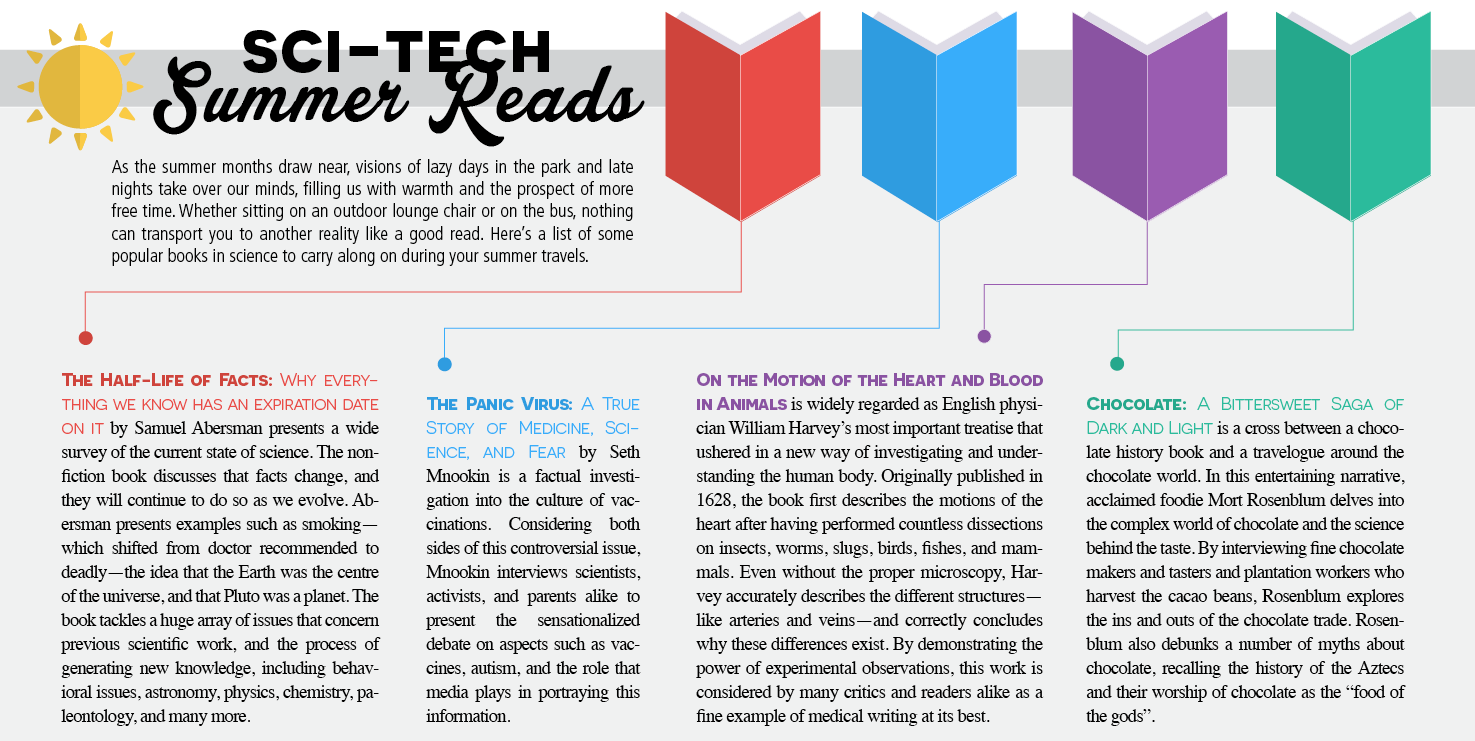As the summer months draw near, visions of lazy days in the park and late nights take over our minds, filling us with warmth and the prospect of more free time. Whether sitting on an outdoor lounge chair or on the bus, nothing can transport you to another reality like a good read. Here’s a list of some popular books in science to carry along on during your summer travels.
The Half-Life of Facts: Why everything we know has an expiration date on it by Samuel Abersman presents a wide survey of the current state of science. The non-fiction book discusses that facts change, and they will continue to do so as we evolve. Abersman presents examples such as smoking—which shifted from doctor recommended to deadly—the idea that the Earth was the centre of the universe, and that Pluto was a planet. The book tackles a huge array of issues that concern previous scientific work, and the process of generating new knowledge, including behavioral issues, astronomy, physics, chemistry, paleontology, and many more.
The Panic Virus: A True Story of Medicine, Science, and Fear by Seth Mnookin is a factual investigation into the culture of vaccinations. Considering both sides of this controversial issue, Mnookin interviews scientists, activists, and parents alike to present the sensationalized debate on aspects such as vaccines, autism, and the role that media plays in portraying this information.
On the Motion of the Heart and Blood in Animals is widely regarded as English physician William Harvey’s most important treatise that ushered in a new way of investigating and understanding the human body. Originally published in 1628, the book first describes the motions of the heart after having performed countless dissections on insects, worms, slugs, birds, fishes, and mammals. Even without the proper microscopy, Harvey accurately describes the different structures—like arteries and veins—and correctly concludes why these differences exist. By demonstrating the power of experimental observations, this work is considered by many critics and readers alike as a fine example of medical writing at its best.
Chocolate: A Bittersweet Saga of Dark and Light is a cross between a chocolate history book and a travelogue around the chocolate world. In this entertaining narrative, acclaimed foodie Mort Rosenblum delves into the complex world of chocolate and the science behind the taste. By interviewing fine chocolate makers and tasters and plantation workers who harvest the cacao beans, Rosenblum explores the ins and outs of the chocolate trade. Rosenblum also debunks a number of myths about chocolate, recalling the history of the Aztecs and their worship of chocolate as the “food of the gods.”







